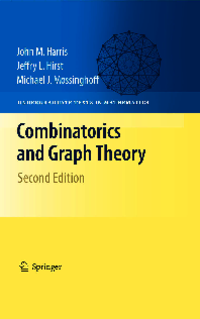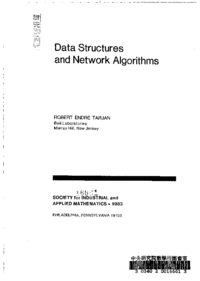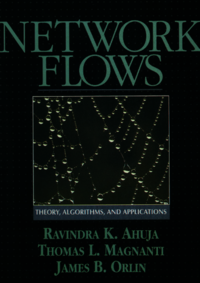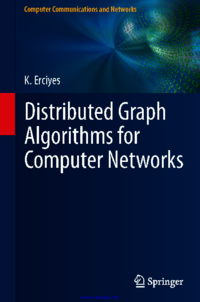Categoría "Teoría de grafos"
Se han encontrado 5 Coincidencias
Matching Theory
101 Visitas | 145 Descargas | 2014-02-17 21:21:10 | ycid
This book is an extensive compilation of graph theory, aimed to solve several matching problems. It can be used a general text-book about Combinatorial Optimization, yet its center is matching.

Combinatorics and Graph Theory
133 Visitas | 181 Descargas | 2014-02-17 21:23:09 | ycid
This book grew out of several courses in combinatorics and graph theory given at Appalachian State University and UCLA in recent years. A one-semester course for juniors at Appalachian State University focusing on graph theory coveredmost of Chapter 1 and the first part of Chapter 2. A one-quarter course at UCLA on combinatorics for undergraduates concentrated on the topics in Chapter 2 and included some parts of Chapter 1. Another semester course at Appalachian State for advanced undergraduates and beginning graduate students covered most of the topics from all three chapters.

Data Structures and Network Algorithms
140 Visitas | 181 Descargas | 2014-02-17 21:30:47 | ycid
Network Algorithm are useful in the current days (Internet for example requires it). This book give several algorithm in networks such as Maximum Flow, Maximum Flow with Minimum Cost, etc.

Network Flows
117 Visitas | 241 Descargas | 2014-02-17 21:35:02 | ycid
Network flows is an exciting field that brings together what many students, practitioners, and researchers like best about the mathematical and computational sciences. It couples deep intellectual content with a remarkable range of applicability, covering literally thousands of applications in such wide-ranging fields as chemistry and physics, computer networking, most branches of engineering, manufacturing, public policy and social systems, scheduling and routing, telecommunications, and transportation. It is classical, dating from the work of Gustav Kirchhoff and other eminent physical scientists of the last century, and yet vibrant and current, bursting with new results and new approaches. Its heritage is rooted in the traditional fields of mechanics, engineering, and applied mathematics as well as the contemporary fields of computer science and operations research.

Distributed Graph Algorithms for Computer Networks
Distributed Graph Algorithms for Computer Networks
113 Visitas | 115 Descargas | 2015-12-11 18:15:55 | pecarrazana
Distributed systems consisting of a number of autonomous computing elements con- nected over a communication network that cooperate to achieve common goals have shown an unprecedented growth in the last few decades, especially in the form of the Grid, the Cloud, mobile ad hoc networks, and wireless sensor networks. Design of algorithms for these systems, namely the distributed algorithms, has become an important research area of computer science, engineering, applied mathematics, and other disciplines as they pose different and usually more difficult problems than the sequential algorithms. A graph can be used to conveniently model a distributed sys- tem, and distributed graph algorithms or graph-theoretical distributed algorithms, in the context of this book, are considered as distributed algorithms that make use of some property of the graph that models the distributed system to solve a problem in such systems. This book is about distributed graph algorithms as applied to computer networks with focus on implementation and hopefully without much sacrifice on the theory. It grew out of the need I have witnessed while teaching distributed systems and algo- rithms courses in the last two decades or so. The main observation was that although there were many books on distributed algorithms, graph theory, and ad hoc networks separately, there did not seem to be any book with detailed focus on the intersection of these three major areas of research. The second observation was the difficulty the students faced when implementing distributed algorithm code although the con- cepts and the idea of an algorithm in an abstract manner were perceived relatively more comfortably. For example, when and how to synchronize algorithms running on different computing nodes was one of the main difficulties. In this sense, we have attempted to provide algorithms in ready-to-be-coded format in most cases, showing minor details explicitly to aid the distributed algorithm designer and implementor
Contribuir
Usted puede contribuir con Libros UCLV, es importante para nosotros su aporte..
Contribuir